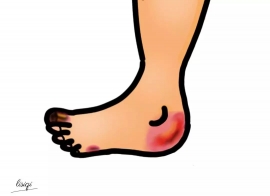
伤口世界

- 星期四, 28 11月 2019
糖尿病为什么那么难缠
原创: Dr. Canning 兰世亭
糖尿病是我国乃至全球性的多发病和常见病,在世界范围内,糖尿病的发病率急剧增高,严重威胁人类健康。近年来,我国糖尿病患者也越来越多,现阶段我国患糖尿病的成年人达到9.7%,即使确诊糖尿病的患者,血糖控制也不理想。那么,糖尿病为什么那么难缠?

- 星期四, 28 11月 2019
糖尿病患者吃豆类有好处吗?
原创: 国际糖尿病 idiabetes 转自:国际糖尿病
豆类是一种糖尿病的超级食物,是糖尿病患者的理想选择,可提供许多健康和营养方面的好处。美国糖尿病协会(ADA)列出了一系列对糖尿病有益的食物,这些食物富含维生素、矿物质、抗氧化剂和纤维,可能有助于预防疾病,而豆类在其中名列前茅。本文讨论了豆类的好处、营养,以及最佳豆类食物。

- 星期四, 28 11月 2019
糖尿病足 | 从恐惧到了解
北京大学第三医院
糖尿病足,可能是最让糖尿病患者担心的并发症。今天就为大家带来关于糖尿病足的科普知识,希望广大患者对它减少恐惧、增加了解、重视预防、合理治疗。

- 星期四, 28 11月 2019
糖尿病的高危信号请看这里!
公共卫生与预防医学
近年来,我国糖尿病患病率急剧上升,并且发病呈现年轻化趋势,危害人群的范围越来越大。然而,在现实生活中,还是有很多人,尤其是有家族病史的人群不能正确认识糖尿病,对于自身存在的高危因素也没能引起足够的重视。11月14日是联合国糖尿病日,今年的主题是“家庭和糖尿病”,在山医大一院举办的主题义诊中,专家提醒广大公众,对于有糖尿病患者的家庭而言,一定要重视“警告”因素。

- 星期四, 28 11月 2019
糖尿病谨记这8条锦囊,不怕血糖不听话!
公共卫生与预防医学
糖尿病是慢性病,其实也就是我们平常所说的生活方式的改变!需要我们在日常生活中学会自我管理,坚持健康的生活方式,这样才能做到有效的控制病情!

- 星期四, 28 11月 2019
44年病程的糖尿病患者提醒你:糖尿病的致命合并症——肺结核,不可不防
原创: 邓焕新 糖尿病之友
众所周知,肺结核是一种慢性传染性疾病,你可能还不知道:糖尿病和结核病联系密切,素有"姐妹病"之称,并且均是临床常见病和多发病,两病并存可互相影响。
糖尿病患者发生肺结核的几率是非糖尿病人群的 4-5 倍,而肺结核又诱发和加重糖尿病,我国糖尿病合并肺结核率高达 40%,两病共存时其发病率逐年增高。
